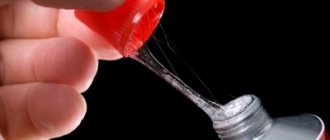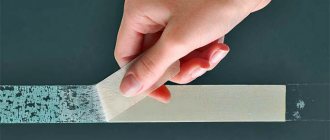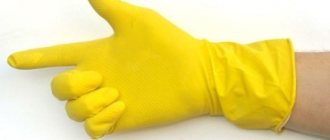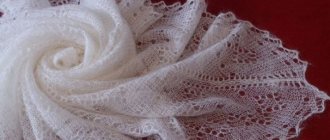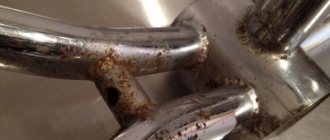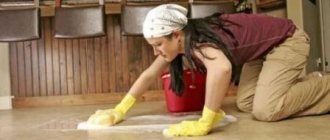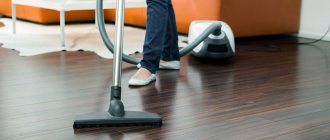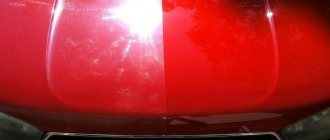I often came across people asking how to wash iodine from their hands and nails. But I myself have never found myself in such a situation, I always did everything carefully and could not understand how one could get very dirty in iodine. But there is a first time for everything. Recently, my nails began to break, so I started looking on the Internet for a recipe on how to save them.
As a result, I found a good recipe for a mask with added iodine, bought it at the nearest pharmacy and decided to make it in the evening. I unscrewed the cap, but there was a problem with the small stopper in the bottle. I couldn’t open it for a long time, I pulled it sharply and all the liquid spilled out. All my hands were brown, and I had to look for a new way, but how to wash iodine off my nails.
Although iodine is produced by humans, it is from chemical elements of natural origin, so it is quite difficult to remove it from any surface. It tends to eat into the material; I found several tips on the Internet that will help you wipe it off your nails and hands.
Traditional methods
In addition to detergents and solvents, some improvised means of combating traces of iodine have proven themselves to be effective.
Starch will successfully remove the stain from the surface, but will color it blue. Good for rescuing denim clothing. If there is no ready-made starch powder, then raw potatoes can replace it - you need to cut the fruit in half and rub it on the contaminated surface. It will also help out if the question is how to remove iodine from linoleum.
Milk copes with this contamination on clothing and other textiles. Soak it in it for 15-20 minutes, after which the item is washed with laundry soap or hand washing powder.
Benefit
Iodine rightfully occupies a leading position among beneficial microelements for the body. It has remarkable permeability into the layers of the nails, resulting in amazing properties:
- Nutrition and healing of brittle nails.
- Prevention of splitting of the nail plate.
- Activation of rapid growth.
- Successful results in the treatment of fungal infections, including on the feet.
- Prevents infections when the cuticle is damaged.
The advantages of iodine are obvious, the main thing is not to forget that the element is toxic in large quantities. In addition, the alcohol in the solution also has negative effects if used in excess. Therefore, it is important to know how to use the product and what to combine it with.
Removing iodine from body parts
Iodine often gets on the skin of the hands and feet. Sometimes, for preventive purposes, it has to be applied in the form of an iodine network to the body. In general, the iodine itself is washed off within 24 hours, but there are times when it needs to be removed immediately.
Iodine is washed off from the skin on its own within 24 hours
How to scrub skin, nails and hair
There are several means to remove iodine from different parts of the body.
- Lemon juice. Apply it to a cotton pad and wipe the iodine off your skin.
- Vegetable oil or fatty cream. Apply the product to the stain and wash off after an hour.
- Alcohol. It is enough to wipe the iodine trace with a cotton swab dipped in an alcohol solution.
- Honey. Mix it with salt and apply the mixture to your skin. Rub lightly and rinse with water.
- Soap. Lather the stain and rinse with water.
Lemon juice or nail polish remover will help remove iodine from nails. If the solution gets on your hair, apply hydrogen peroxide to the colored area and then rinse with water.
Clinical signs
Normally, the nail plate is smooth and even, but as a fungal infection develops, its structure is disrupted and its appearance deteriorates. Onychomycosis is a slowly progressive disease. The first signs of the disease are not observed immediately after contact with the pathogen, but after a while, when fungal spores penetrate deep tissues.
Onychomycosis can be recognized by the following signs:
- itching and burning in the interdigital areas;
- small skin cracks on the fingers;
- severe sweating of the feet;
- peeling of the periungual platinum;
- unpleasant odor;
- skin redness;
- thickening of the nail;
- dullness, yellowness and roughness.
Pathological changes are present not only on the nails, but also on the skin of the feet, especially between the fingers and toes.
In dermatology, there are three main stages of onychomycosis:
- Normotrophic type - the disease often goes unnoticed, which leads to its progression. You may notice minor spots or stripes on the nails, it loses its shine, may change its thickness, and itching and burning appear.
- Hypertrophic onychomycosis - there is thickening and deformation of the nail, bird's claw syndrome.
- Atrophic - destruction of the nail plate, the nail moves away from the bed. The only treatment for the atrophic form of the disease is nail removal.
When nails are deeply damaged, the infection penetrates the bloodstream and significantly reduces the functioning of the immune system, thereby increasing the risk of developing other diseases.
Photo: Stages of onychomycosis
Handy products for cleaning iodine contaminants
There are not always special chemicals on hand that can save a damaged item. Meanwhile, after the spot has already been planted, the minutes count. There are several recommendations on how to remove iodine at home.
- Cold milk is an indispensable “first aid” in the fight against traces of iodine. Immediately immerse the stained area in milk and leave for 20-25 minutes. After this, rub the fabric with laundry soap and load it into the washing machine.
- Potato starch. For this method you will need a potato tuber rich in starch. It needs to be cut in half. Rub the material with a cut of one half. Dark iodine stains will take on a bluish tint - this is due to a chemical reaction of the substances. There is no need to be afraid of this trick. You just need to wash the item in warm water with washing powder.
- You can try the option with pure starch. To do this, sprinkle a cloth moistened with water with starch. Wait until the material under the granular substance turns blue. After this, wash in water with detergent.
Potato starch is an effective remedy for removing iodine stains
- Slaked soda. A more active mixture than the above. Can deal with old stains. Apply baking soda to the fabric and add a few drops of 9% vinegar. Leave for several hours, wash as usual. Do not use on nylon.
- Ascorbic acid. Traces of iodine from clothing can be removed with ascorbic acid in any form - liquid or tablets. Moreover, in the second case, the pill must be crushed and mixed with water. Apply the solution to the stain and wait until it begins to discolor and put it in the washing machine.
- A very easy to implement but effective method to remove traces of a medical product is to expose it to high temperatures. In other words, just iron it with an iron. To do this, you need to place a piece of light natural cloth under the soiled item and cover it with the same cloth on top. Iron for at least 10 minutes.
What to do with a stain on a carpet or sofa
The difficulty in removing iodine stains from carpet is that the pile absorbs any cleaning liquid and its odor. And if the carpet base gets soaked, it can become damp. Over time there is a risk of mold developing.
Wash light-colored items carefully.
Therefore, it is preferable to remove iodine from carpets using dry impurities. How to remove iodine from carpet? Here are some useful tips:
- Do not rub spilled iodine on the carpet. Gently blot spills with a dry cloth to prevent them from being absorbed into the base.
- Mix starch and water until a thick paste forms.
- Apply the mixture to the stain and wait about an hour. The water-starch mass should not be liquid so that the pile and base of the carpet do not get wet.
- Collect white starch residue. Apply shavings of laundry soap diluted in water to the stain and completely remove the iodine stain.
- Collect the foam with a sponge or rag, dry the carpet by weight or with a hairdryer.
In most cases, iodine can be removed without problems if you choose the right remedy.
Causes and risk factors
The etiology of the disease is based on infection of the nails by pathogenic fungi, including:
- dermatophytes (T. rubrum, T. interdigitale);
- yeast of the genus Candida (C. aibicans, C. tropicalis);
- mold fungi (Fusaria, Alternaria).
In addition to the main cause of the disease, there are a number of predisposing factors that increase the risk of developing onychomycosis. The trigger for the activation of a fungal infection can be:
- lack of nail care;
- diabetes;
- varicose veins;
- obesity;
- injuries;
- wearing tight shoes;
- poor quality pedicure;
- taking potent drugs.
Particular attention in the development of the disease is given to the state of the immune system. With strong immunity, the human body will be able to resist pathogenic flora even after it penetrates the body, but if immunity is reduced, fungal mycelium easily penetrates the epithelium of the nail, which causes inflammatory and dystrophic changes.
Nail fungus should not be considered as an aesthetic problem, since the toxins released by fungi can spread throughout the entire body and cause a number of concomitant diseases.
Photo: Symptoms of fungal nail infection
Recommendations for removing stains
The following tips will be helpful when removing iodine stains:
- When choosing a stain removal method, the type of fabric, degree and freshness of the stain are taken into account.
- The use of any cleaning substance must begin with testing. Apply a little product to an inconspicuous area of clothing or a piece of fabric and see the reaction.
- If iodine gets on synthetic and delicate fabrics, stain removers and chemicals should not be used so as not to destroy the fibers and spoil the item.
- Denim fabrics, products with the addition of synthetics and poor-quality dyeing, which fade even in warm water, are susceptible to exposure to chemicals.
- When using solvents and aggressive drugs, it is recommended to wear gloves to protect your hands from harmful effects.
- Immediately after iodine gets on the fabric, it should be washed off. When this is not possible, the blot needs to be blotted with a napkin, cotton pad or sponge. So, the substance will saturate the material less and is easier to wash off.
- The contamination is treated from the inside out, and an absorbent material, for example, cotton fabric, is placed on the front side.
- To avoid smearing the medical solution over the surface and spreading the stain, wipe it in a circular motion, moving from the edge to the center.
- The choice of product also depends on whose clothes are contaminated. It is preferable to clean the clothes of children, allergy sufferers and people with sensitive skin with home remedies.
- Chemical preparations cope better with traces of iodine and require less time and effort.
- A reliable assistant in the fight against fresh iodine stains is the sun. Under the sun's rays, recent pollution fades away. It is also recommended to dry things in the sun after removing iodine and washing.
How to remove iodine from different types of fabric?
Washing off dried iodine is problematic, but possible. The main thing is to adhere to the rules and not neglect the instructions.
- Do not clean delicate fabrics with aggressive chemical solutions.
- You can remove brown marks from bed linen using laundry soap. 72% composition is used. Lather the product, soak in warm water for an hour, wash.
- Thin cotton is washed with milk, soda and vinegar.
- For dense cotton material, use starch, acetone, and ammonia.
- Synthetics are subject to deformation. To remove contamination, use ammonia solution; do not wash at high temperatures.
- To clean natural textiles, use heat treatment. Apply a light-colored cotton cloth on both sides. Iron the problem area for 10-15 minutes.
Denim material
The easiest way to remove iodine from jeans is to use starch. We will give 2 cleaning methods:
- Mix starch and water. It should turn out to be a porridge-like mass. Apply in a thick layer. Leave for at least 12 hours. After time, there will only be blue.
- Pre-soak the item, sprinkle the problem area with starch, and rub in with a brush. Wait 10-12 hours, then wash.
Leather
You can remove stains from leather products with acetone or hydrogen peroxide. Wet a cotton pad and wipe the problem area. Dry.
Fat cream cleanses the skin well of iodine and other impurities:
- Apply to the stained area.
- Wait 10 minutes.
- Rinse off.
Is it possible to wash iodine in a washing machine?
You can wash clothes from iodine stains in a washing machine. For this you will need special stain removers. They are presented in a wide range in any household chemicals store. The most popular among them: Vanish, Ace oxy magic, Udalix Oxi Ultra, Astonish Oxy plus, Sarma Active 5 in 1. The main thing is to follow the recommendations specified in the instructions for the drug.
Please note that it is not recommended to wash most types of fabric at high temperatures. Therefore, before washing the product, you should use pre-soaking and washing. To ensure a guaranteed result, it is better to use traditional stain removal methods, and then wash the item in a washing machine at the temperature recommended for this type of fabric.
For example, you can use regular dishwashing detergent.
- Apply the liquid to the stain.
- Leave for 2 hours.
- Wash in a washing machine using washing powder.
A washing machine is an indispensable assistant for washing clothes with any kind of dirt.
Contraindications
In order not to cause harm to the nail plates and the entire body, it is worth analyzing possible contraindications for the use of iodine:
- Hypersensitivity, substance intolerance, allergy.
- Thyroid diseases.
- The presence of open wounds and eczema on the skin around the nail.
- Pregnancy and breastfeeding.
Also, those who are sensitive to strong odors, have metabolic disorders and liver problems should use the product with caution. Owners of very thin nails should be attentive to testing the drug before application and reduce the procedure time by 2 times.
Special chemicals to remove iodine stains
This method cannot be used for brightly colored fabrics. If iodine gets on colored fabric, the stains can be treated with a solution of denatured alcohol. The substance can severely irritate the skin, so clothes should be thoroughly rinsed several times in cold water.
Another chemical stain remover is sodium hyposulfite. This substance is used when printing photographs; it can only be found in specialized stores. Sodium hyposulfite has a very aggressive effect on fabric, so it is better to first test the effect on a less noticeable area of clothing.
This list includes bleaches and stain removers. They must be used strictly according to the instructions. Otherwise, the quality of the affected product may suffer. To reduce the risk of additional damage, the product must be tested before cleaning the stain itself. To do this, use an inconspicuous area of similar fabric. Compositions from the “Vanish” series are considered universal SMS.
They are not difficult:
- Medicines and chemicals should be stored out of the reach of children and pets.
- When preparing the cleaning mixture, do not forget about gloves and a mask. Many compounds can harm mucous membranes and skin.
- For washing, it is recommended to use laundry soap or hypoallergenic powder.
Chemicals and stain removers are aggressive and require careful use. To remove stains from carpet, furniture or clothing, use chemicals
Initially, use the drug with a minimum concentration. The dose of the substance is increased if attempts are unsuccessful. For effectiveness, repeat the procedure 2-3 times.
Chemicals are used to remove stains from carpet, furniture or clothing. Initially, use the drug with a minimum concentration. The dose of the substance is increased if attempts are unsuccessful. For effectiveness, the procedure is repeated 2-3 times.
Acetone
Not suitable for removing iodine traces on colored items or thin materials. The active component discolors the material, and as a result the blouse will lose its presentable appearance. To eliminate stains on a blouse, apply a couple of drops of acetone (nail polish remover) to a sponge and treat the stained area. Apply a napkin to the stain. The operation is repeated several times until the print disappears. Wash the item with washing powder.
Hydrogen peroxide
To get rid of iodine marks, soak the stained area on the sweater with a swab in a solution prepared from 1 tbsp. l. products and 1000 ml of liquid.
Hydrogen peroxide
Photoreactive
A reagent called sodium hyposulfite, which is used in photo studios, can remove iodine stains from a jacket. Moisten the spot with the chemical, wait until it disappears, then wash it under a cold water tap. Next, the product is washed with powder and rinsed thoroughly.
Sodium borate
Another name for the product is borax. To remove iodine stains on a towel, a suspension of 35 g of borax and 3% milk (1 tbsp) and table vinegar is suitable. The components are mixed, distributed according to the contamination, and covered with plastic wrap.
Option 2 for using sodium borate involves combining powder (25 g) together with lemon juice (10 g) and 20 ml of liquid. First, moisten the stained area with peroxide and blot it after 5 minutes. Then apply the prepared solution and wash it off after 15 minutes.
Turpentine
To prepare the active mass, take 35 g of corn or potato starch, add 6 ml of turpentine and 4 ml of ammonia or ammonia. Mix the ingredients and soak the stained area in hot water. Cover the iodine print with the solution and place polyethylene on top. Keep the mixture on black things for 60 minutes.
Then remove micro-residues with a napkin and rub the mark with a toothbrush. When the result is not satisfactory, repeat the manipulation. When removing blots, wash wardrobe items as usual with conditioner.
Dish detergent
The iodine trace is poured over the gel and left for 4 hours. Next, sprinkle with water, foam and wait half an hour. Finish with washing in the traditional way.
Dishwashing detergent is poured over the iodine trace and left for 4 hours
Denatured alcohol
Dilute ½ teaspoon of pipe cleaner in a glass of water. The contaminant is treated with a pipette. Wait for the iodine imprint to be eliminated and immediately rinse the item of clothing.
How to remove iodine from bed linen
If iodine has been spilled on bed linen, the first step is to prevent the liquid from being absorbed and remove the excess using napkins or paper towels. At the same time, you must not allow the stain to smear. The soiled item must be immediately separated from the clean items: remove the pillowcase, collect the bed linen.
What household products should I use for washing?
Iodine is removed from bed linen and clothing using the following means:
- dishwashing detergents;
- laundry soap;
- potatoes, starch;
- ammonia;
- alcohol, alcohol-containing substances;
- hydrogen peroxide;
- solvents;
- nail polish remover;
- water supply cleaning products;
- stain removers or bleaches
How it develops
Nail fungus (onychomycosis) is an infectious disease caused by pathogenic fungi - parasites. According to medical observations, the disease is diagnosed in 7% of the adult population. During the development of onychomycosis, pathogenic fungal pathogens infect the tissues of the nail plates, which leads to disruption of their structure.
The source of fungal infection is often parasitic fungi. Infection often occurs in public places (locker rooms, baths, saunas). After attaching to the skin of a healthy person, scales of fungal parasites penetrate the upper layers of the epidermis, begin their active reproduction, release waste products that poison the human body, reduce immune defense, and make the body defenseless against various secondary infections. Spores of pathogenic fungi penetrate into the layers of the nail plate, which begins to lose its natural color, white spots and yellowness appear. If treatment is not carried out at this stage, deformation of the plate will occur, followed by its destruction and damage to healthy toes.
Basically, toenail fungus is a consequence of mycosis, which causes damage to the feet or areas between the toes. In the international classification of diseases, onychomycosis is coded B35.1 and belongs to the category of parasitic and infectious pathologies.
Photo: Pathogens of nail fungus
How to remove iodine stains in the first minutes after contamination
It is important to remember: It is easiest to remove any stains from clothing or furniture immediately after contamination. This rule is especially relevant for iodine contaminants, so immediately after it gets on the fabric, this area must be thoroughly blotted
To do this, take napkins or any fabric that absorbs moisture well, place it under the stain, cover the problem area with the same fabric and blot it. The more moisture left on the napkins, the easier it is to remove the iodine stain.
Handy ways to remove iodine stains
If the stains left by the medicine are fresh and there are few of them, and the item is not really needed, you can blot the spilled liquid with a napkin and hang the item on the balcony. Under the influence of sunlight, iodine will begin to fade and erode, and after some time the contaminated areas will disappear.
Iodine interacts well with alkali, so a fresh stain should be immediately moistened with water, rubbed with laundry soap, and then rinsed with running water. The stains on the fabric should come off. If necessary, the product can be washed by hand or in a washing machine.
Educational video - how to remove iodine from clothes:
Since light-colored materials are easily soiled and any, even the slightest, contamination becomes noticeable, you can try to remove iodine dirt from white materials with ammonia. Take a cotton swab and soak it in a solution of ammonia
Using a damp swab, carefully wipe the contaminated areas and begin to lightly rub ammonia into the fabric. The treated area should turn pale
Then rinse the stain in running water.
If you were unable to remove the stain the first time, do all these manipulations again. You can also lighten medicine stains from bed linen in the same way.
Since denim fabric can fade from some substances, it is best to remove iodine formation from jeans with starch. If you don't have any on hand, regular potatoes may work. When iodine interacts with starch, the brown stain turns blue, and it will be completely invisible on denim. In the absence of starch, the stained area can be treated with gruel from potatoes grated on a fine grater. After treatment, the pants will have to be washed.
Chemicals to remove iodine stains
You can remove iodine stains using the following means:
Ammonia - this product must be used carefully when processing synthetic materials. When processing such materials, a hole may form or the color may change.
Acetone or substances containing it - in this case, stains must be removed using a cotton swab, gently rubbing the substance, and then immediately washed with any suitable detergent.
Sodium hyposulfite removes iodine contamination very well
This substance is very effective for old stains. You can easily remove the stain by placing a napkin soaked in a chemical under the cloth, and placing another on top, pressing down, leaving for 10–15 minutes, then rinsing the solution with running water and washing. The chemicals contained in ordinary dishwashing detergent effectively combat drug stains. Moisten the contaminated area of material generously with a concentrated detergent solution and leave for several hours. After this, wash and dry the item. You can wash stains from colored clothes with denatured alcohol. Gently drip the solution onto the drenched area, then after a few minutes wash it off with running water.
Diagnostics
Before treating nail fungus, you need to determine the type of pathogen. The doctor collects anamnesis, conducts an examination, and prescribes tissue scrapings, which will help determine the type of pathogen. If necessary, fluorescent diagnostics will be prescribed, which consists of examining the nail using a Wood's lamp.
After the examination and the results of the examination, the patient will be prescribed treatment.
Photo: Examination of nails by a dermatologist
Effective recipes for working with colored and white things with your own hands
To achieve the result, multi-component stain removers are used. Thanks to the selected elements, the effect is enhanced and the effect on the fibers is softened.
First
The cleaning solution is prepared from dishwashing detergent and 3% hydrogen peroxide. Ratio: 1:2. Stain remover properties: oxygen, with a degreasing effect and water softening effect.
Second
To obtain a mixture of 3% hydrogen peroxide, baking soda, and dishwashing detergent, take the following proportions: 8:1:4. Soda is used as a catalyst that enhances the oxidative effect. It is safe for the skin and removes organic odors.
Third
Homemade stain remover made from coarse table salt and detergent. Salt has high hygroscopicity and abrasive properties. Mixed with a degreaser, it removes all types of stains well: from wine to rust. If there is an excess of salt, salt stains remain on colored clothes.
The concentration and amount of stain remover must correspond to the size of the stain. After cleaning, items are thoroughly rinsed in warm and cool water.
Fourth
Table vinegar (9%) (citric acid/fresh lemon juice) is mixed with table salt, baking soda and the stain is wiped off. Ratio: 1 tablespoon acid, 1 teaspoon soda, ½ teaspoon salt. As a result of the chemical reaction, oxygen is released. The effect of a homemade stain remover is short-lived: while acetic acid and NaHCO3 react. The item is washed and rinsed well so that the smell of vinegar disappears.
Fifth
A solution of laundry soap with borax and ammonia will replace a special stain remover for colored and children's products. To obtain a liquid soap base, laundry soap is grated and boiled until the shavings disappear. For 0.5 liters of boiling water – 1 piece of soap. The resulting emulsion is cooled to 40 degrees. The entire volume is not used. The shelf life of the emulsion is 7 days.
Precautions when removing iodine stains
To prevent stains on the fabric from smearing and increasing, you need to do the following manipulations:
If you need to rub a contaminated area, you must do this very carefully so as not to smear it and increase its area. If the contaminated fabric is very thin and delicate, synthetic or multi-colored, the chemicals may burn through the material or cause other types of problems. It is better to try to remove stains using natural means. If chemicals will be used during the work, the work must be carried out in compliance with safety precautions.
After completing the work, stains should be washed under running water and the product should be washed. Denim fabric does not tolerate cleaning with chemicals, and in order not to spoil your favorite pants, stains are washed off with natural products.
So, if it is very difficult to remove stains from iodine and not a single dry cleaner gives a guarantee for the work done, but the item is very necessary and dear to the heart, look for proven recipes, try it and hope that the stain will go away and the item will be saved.
Useful video on stain removal:
https://youtube.com/watch?v=Wj2PlMoSMlg
Prevention
Prevention of onychomycosis consists of following certain rules that every person must adhere to:
- Keep your feet and nails clean regularly.
- Lead a healthy lifestyle.
- Proper and fortified nutrition.
- Treat all concomitant diseases in a timely manner.
By following basic rules, you can significantly reduce the risk of illness. It is important to exclude self-medication at the first signs of the disease; only a dermatologist can tell you how to quickly cure nail fungus and eliminate all sorts of complications of the disease. If there is a patient with onychomycosis in the house, his relatives need to exclude all possible contact with his things, since there is a high risk of infection for the entire family.
Video: Doctor Dermatologist onychomycosis
Tips and tricks
To clean a stain without harming the fabric, as well as to remove stains without streaks, you must follow the following rules, which will allow you to wash the stain and save the item for future use:
- You should use the selected product only after a short test on a similar material or an inconspicuous area of clothing.
- To select the correct cleaning products, you should take into account the type of fabric, its thickness, color and age of the stain being removed.
- It is necessary to take into account not only the type of fabric, but also the owner of the item; for children and people suffering from allergies, it is recommended to use only natural means at hand
- To most effectively remove a stain, it is recommended to place a piece of cotton fabric under it during the cleaning process.
- When using any aggressive chemicals, you must wear rubber gloves.
Before you begin removing the stain, please read the following guidelines. They will help you avoid spoiling your favorite item and will greatly simplify the whole process.
- Fresh stains are much easier to remove. Start removing the iodine stain as soon as you notice the mistake.
- Before using the product you choose, test its effect on an inconspicuous area of clothing. Not every fabric can withstand exposure to harsh chemicals or bleaches. Start working if the fabric structure has not changed after the test. Otherwise, try another method.
- The fabric should only be processed from the wrong side. You need to place an old cotton or waffle towel under the front side. At the same time, to prevent the dye from imprinting on the floor or table, place an oilcloth or bag on the surface. It is also a good option to stretch the painted product onto a jar.
- If the chosen method requires wiping, rub from the edges to the center of the stain. This will prevent the stain from spreading and increasing in size.
- If you are using strong chemicals, alternate between washing and rinsing in cold water. This will prevent damage to the product. After removing the stain, be sure to wash the item to remove any remaining chemicals from the fabric.
- In the process of applying products, wiping and washing, stretch the fabric. This will help the cleaning agent penetrate deeper and reach the most difficult to reach places in the fibers of the material.
To remove iodine contamination, follow these rules:
The type of material and the condition of the stains determine the selection of the product. The use of a cleaning product precedes the test control. Synthetics and delicate texture will prevent the use of chemicals and stain removers in the fight against iodine stains, otherwise it will be easy to spoil your outfit. Jeans with the addition of synthetics and low-quality coloring, which are subject to molting in lukewarm water, are afraid of interaction with chemicals. When working with solvents and aggressive agents, use gloves to protect your hands. When iodine gets on your shirt, you need to wash the stain immediately
If there is no possibility of contamination, it is important to blot it with a cotton swab for less impregnation and faster removal. The stain is treated from the wrong side, and a cotton napkin is placed on the reverse side.
To prevent the stain from spreading, wipe it with circular movements from the edge to the middle. If iodine is removed from children's clothes or people with allergies, they resort to home remedies. The sun's rays help remove the stain. Under the sun, a freshly contaminated area fades. Therefore, after eliminating iodine and washing, it is recommended to dry things in sunlight. A fresh iodine stain cannot be cleaned with soap; it creates a thin coating that prevents more powerful products from fighting the stain.
How to remove iodine stains
Before washing iodine from fabric, familiarize yourself with the simple rules for treating stains:
- Fresh stains are easier to clean off, so try to act quickly.
- It is recommended to process clothes from the wrong side.
- If you are wiping a mark, work from the edges to the center. This way you won't let it spread.
- To avoid leaving marks on the other side of the item, place a piece of cloth or a napkin under the area to be treated.
How to apply it correctly at home?
Compliance with the rules for applying iodine to nails is the main requirement that will prevent additional damage to their structure. The recommendations are as follows:
- Use only pharmacy iodine. But it is recommended to use the pure composition no more than once a month. If the nail plates are severely damaged, then increase the number of procedures up to 4 times.
- Apply the product with a cotton swab. Immerse it in iodine for a couple of seconds, then apply a thin layer of the substance to each nail with smooth movements. You should get a slight yellowish tint.
- The procedure is performed before bedtime. Because the unpleasant smell and coloring properties of iodine will confuse people around you. By morning, the iodine will be completely absorbed and will not leave a trace.
- Before the first application, you should make sure that there is no allergy to the components included in the composition. To do this, you need to drop iodine on the inside of your forearm. If no allergic reactions, discomfort, itching or burning occur within 24 hours, you can start using the drug. Otherwise, replace iodine with fucorcin.
- If you use undiluted composition, you should avoid getting it on the skin around the nail and cuticle. Otherwise, severe burns and peeling will occur.
Important! If there is a sufficient amount of iodine in the body, then a slight yellowness will be present on the nails. But it can be quickly removed by rubbing the nail plates with lemon juice.
Traditional methods of dealing with iodine stains
Do not give up if a few drops of iodine solution get on your item. Every housewife has in her arsenal effective products that can cope with even the most difficult stains. If you follow the prescribed procedure, there will be no difficulties in cleaning your favorite item.
Hydrogen peroxide
One of the simplest and most reliable methods. The concentration of the active substance is determined based on the color of the damaged item of clothing. A darker item will require a stronger solution. The contamination is first treated with the prepared mixture, and then washed using special detergents.
Ammonia
It can be used to clean things painted in light colors. The mixture is prepared from two teaspoons of the active ingredient and one glass of water. Use a cotton pad soaked in the resulting composition to clean the stain, moving from the edges to the center. After careful handling, the product should be rinsed and dried. If one procedure is not enough, it can be repeated. Ammonia is considered an active stain remover, so there are usually no problems with stain removal.
These ingredients are used both together and separately. In the latter case, first put soda on the stain and then cover it with vinegar. After this, the soiled clothes are left to soak. Within 3-4 hours, the stain becomes lighter or disappears completely. At the next stage, the product is washed.
Dish gel
The active component of many synthetic products is sodium thiosulfate. To get rid of a stain, just place a few drops on it. The contaminated area is pre-wetted. After rubbing, the composition is kept on the fabric for half an hour. Then the item is washed using powder or soap.
This substance is used to clean clothes dyed in bright colors. Blot the iodine stain with a concentrated mixture. After 10 minutes, rinse the item with cool water. If the contamination is not completely gone, use a soap solution. The procedure does not take much time.
Nail fungus
Beautiful and healthy nails always attract the attention of others, and in some cases are considered the key to good health. A deficiency of vitamins and minerals can worsen the condition of the nail plates, but sometimes the problem is deeper, associated with a fungal infection. Nail fungus, or the medical term “onychomycosis,” refers to a common and insidious disease that can completely destroy the nail plate. Why does the disease develop, what are the signs and how to get rid of nail fungus.
